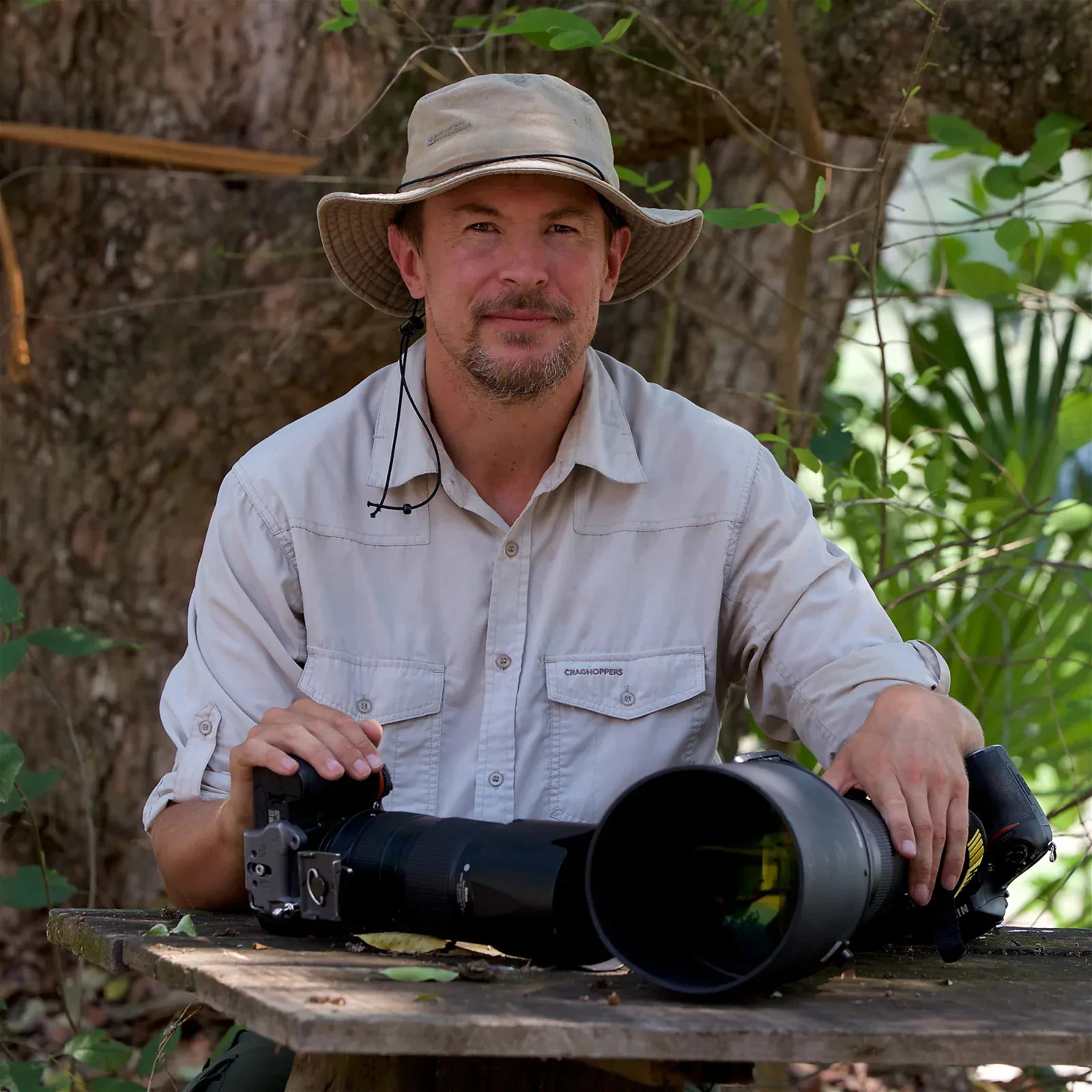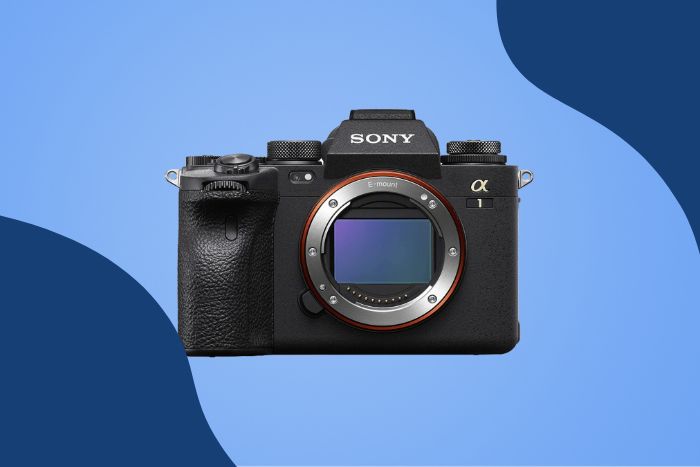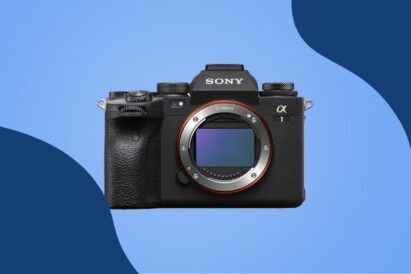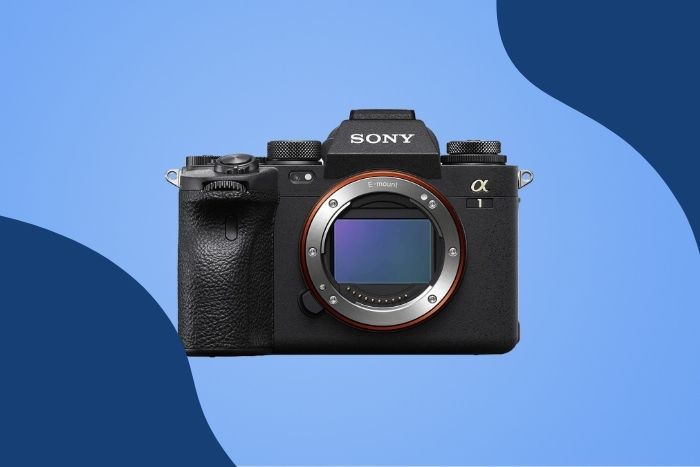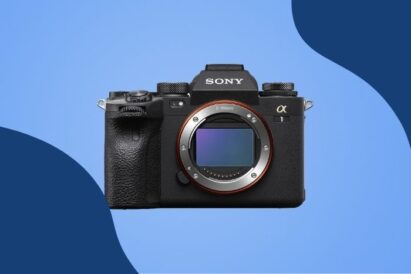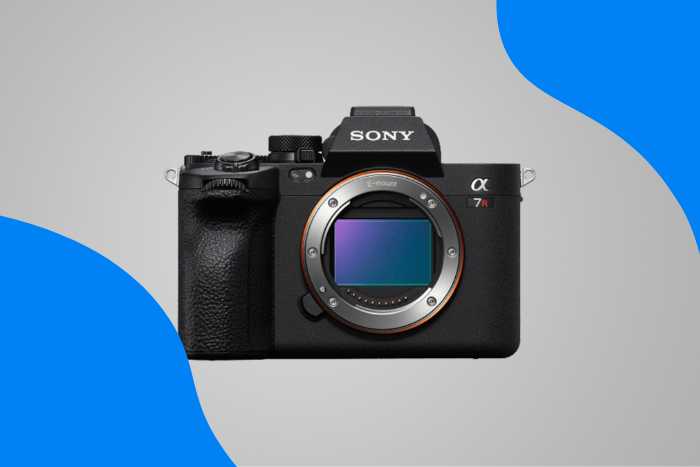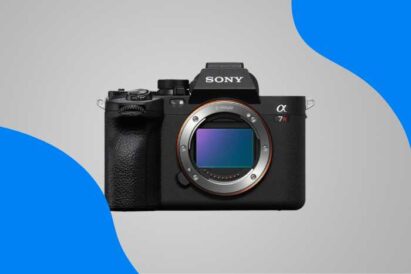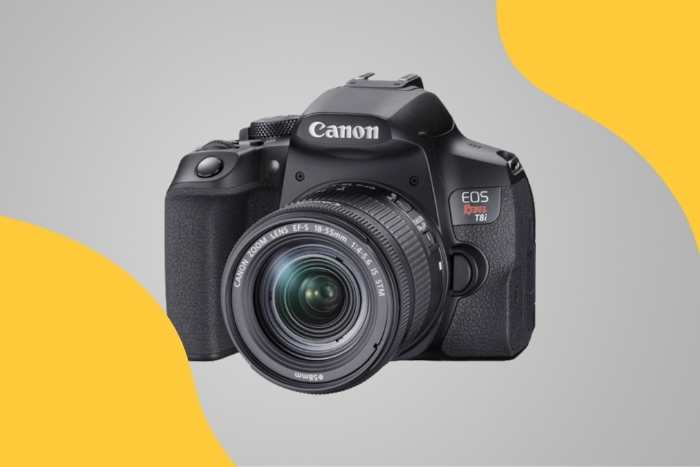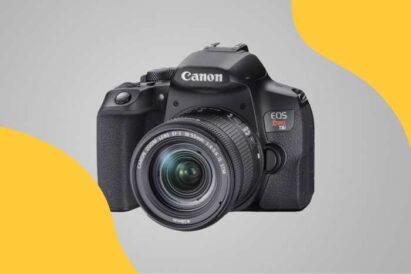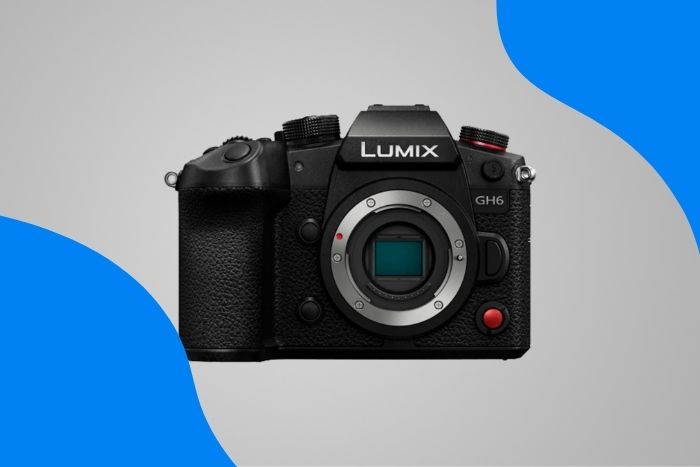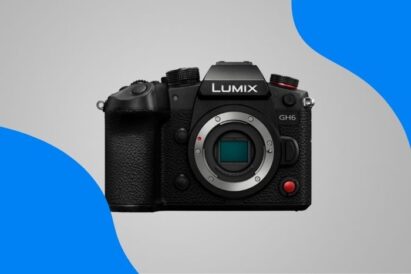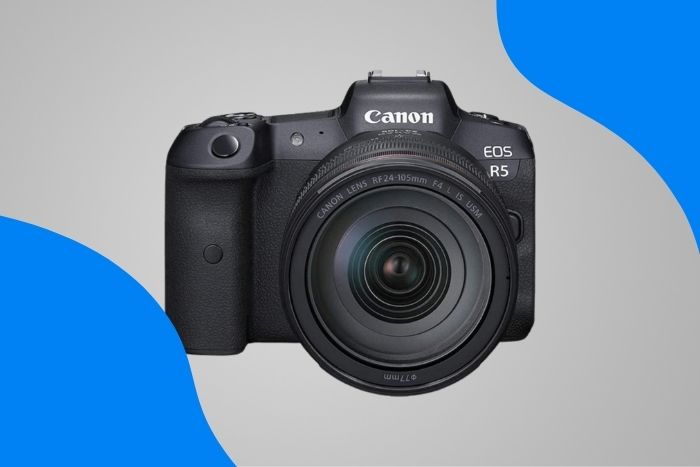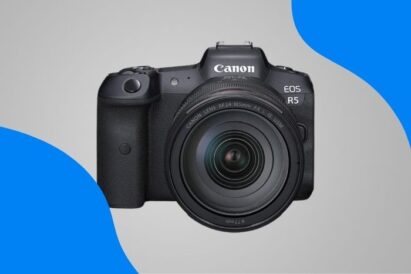When choosing the best camera for macro photography, you must bear in mind many things. Most of these are fairly obvious, but the arguments around sensor size might surprise you.
Macro photographers often want a deeper depth of field to paint a sharp picture of the whole subject. That’s much easier with an APS-C or a Micro Four Thirds camera. On the other hand, full-frame sensors display less noise than APS-C or MFT ones and can work better in low light. The choice is yours!
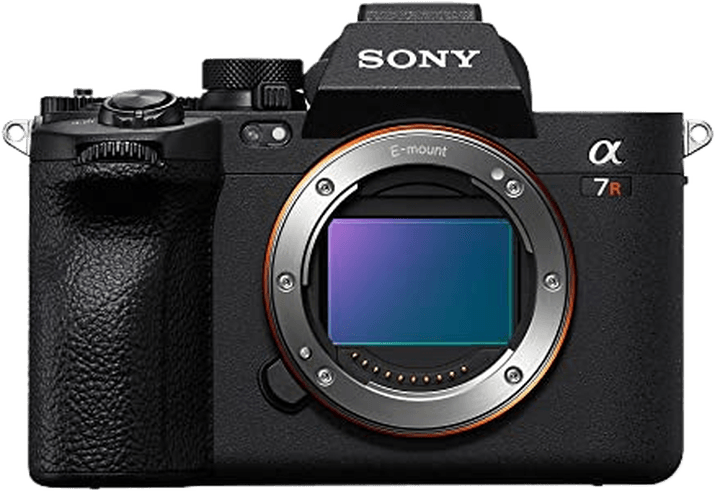
Sony a7R V
Personally, I’d choose a full-frame camera like the a7R V because it meets most users’ needs. The only exceptions are its low frame rate and the lack of in-camera focus stacking. But there are plenty of less expensive crop sensor options like the Sony APS-C a6700 or the Micro Four Thirds OM System OM-1.
What Is the Best Camera for Macro Photography?
Before we list the best cameras for macro photos, here’s a far-from-exhaustive list of what features to look for besides sensor size:
- High resolution for sharp images and cropping
- High frame rate
- AI autofocus (including eye detection and tracking)
- In-Body Image Stabilization (IBIS)
- Pre-burst mode (e.g., OM’s Pro Capture), where the camera buffers images before a shot is taken
- Focus bracketing or stacking
- Focus peaking
- A “what you see is what you get” (WYSIWYG) viewfinder
- An articulating screen for shooting difficult angles
- Portability
- Macro photography lens availability
Now that you have a few ideas about what to look for, here’s a list of the best cameras for macro photography you should consider.

- High-resolution sensor
- Automatic bird or animal eye detection
- Autofocus can track cars, trains, airplanes, and insects
- Big, bright, clear, and sharp electronic viewfinder
- 3.2-inch tilt, flip LCD screen
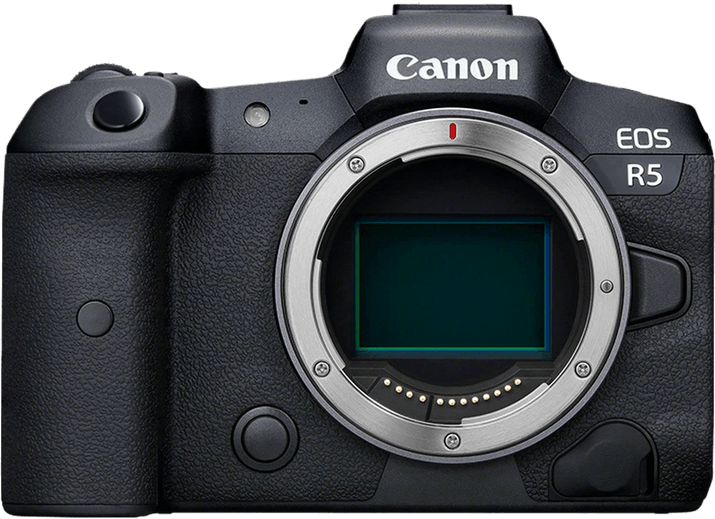
- Large 45 MP sensor
- High frame rate of 20 fps
- In-Body Image Stabilization (IBIS)
- Body, face, eye, and animal tracking
- 8K/30p Ultra HD video
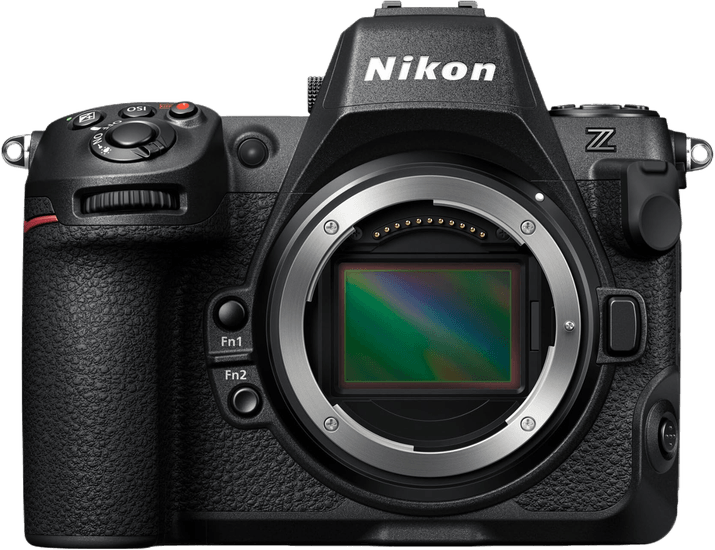
- Excellent 20 fps RAW frame rate (120 fps for JPEG)
- 1/32,000 s max shutter speed
- Up to 6 stops of image stabilization
- Deep buffer (1,000 RAW files)
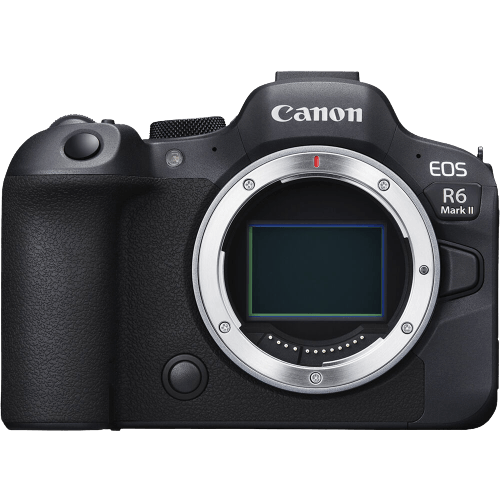
- Excellent dynamic range and low-light performance
- Advanced autofocus with object-detection
- High-speed 40-fps burst mode
- Built-in image and video stabilization
- Ultra-smooth 4K/60p video and webcam functionality

- Improved CMOS sensor
- Wide expandable ISO range (50 to 102,400)
- Built-in image stabilization
- Weather-sealed body
- 4K video recording with 10-bit 4:2:2 color
- 120 fps slow-mo frame rate
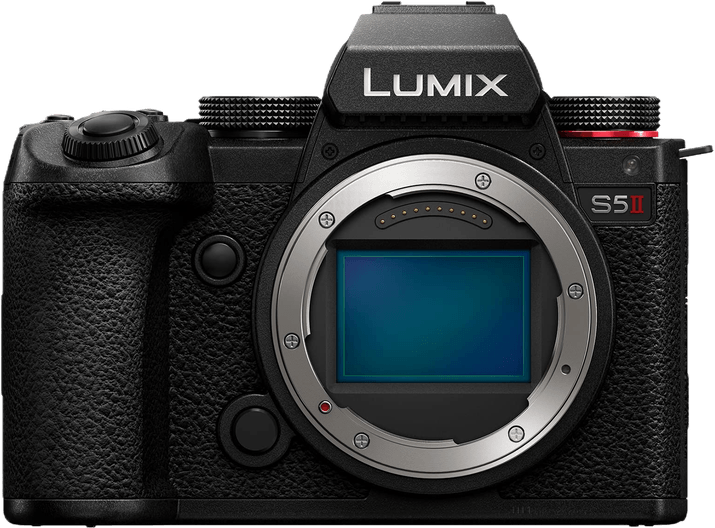
- Phase Hybrid AF system with 779 focus points
- 30 fps burst mode with full 24.4 MP resolution
- Active image stabilization system built-in
- 60 fps video frame rate with full 4K resolution
- Unlimited 4:2:2 10-bit recording
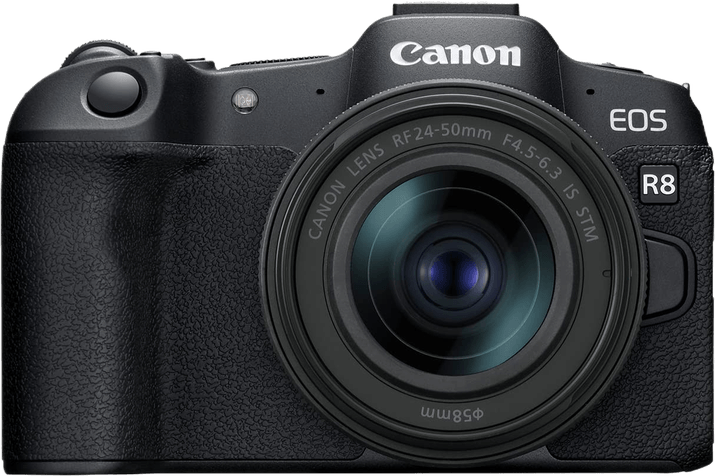
- Canon's lightest full-frame camera body
- Pre-shooting buffer of 0.5 seconds
- Fully articulating touchscreen
- 10-bit HDR video and 40 fps burst rate
- Oversampled 4K/60p video
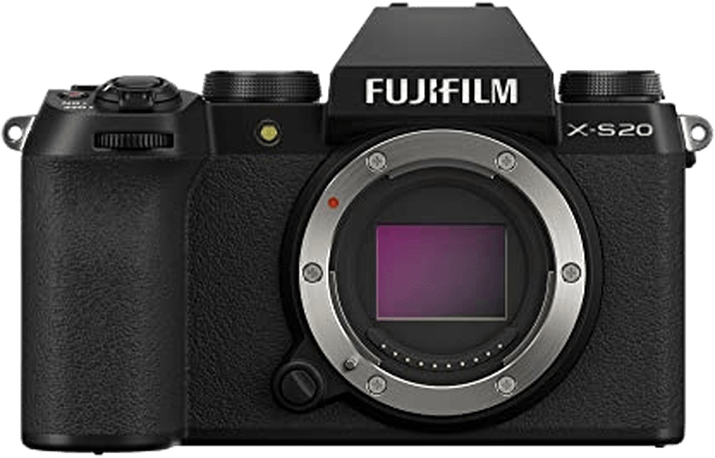
- 26 MP APS-C sensor
- Expanded ISO setting of 80
- Built-in 5-axis image stabilization
- 6.2K video at 30 fps with 10-bit 4:2:2 color
- Uncropped 4K videos with a 120-fps frame rate
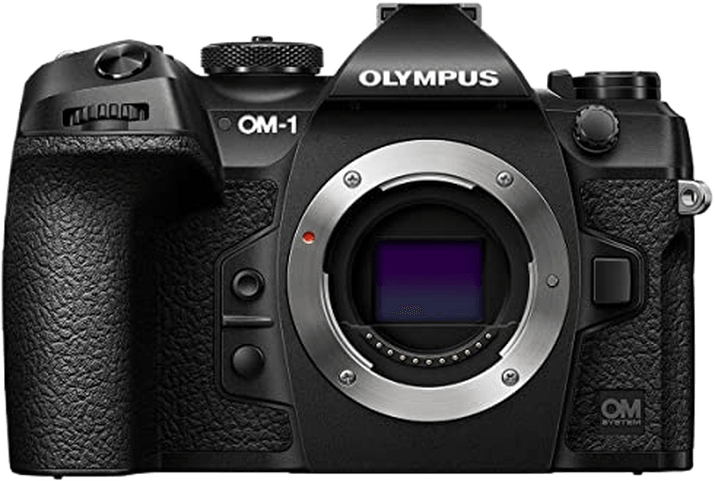
- Powerful 80 MP High-Res Shot mode
- Sophisticated autofocus (1,053 cross-type focus points)
- Incredible 120 fps burst shooting with full resolution
- 4K video at 60 fps, Full HD at 240 fps
9 Best Cameras for Macro Photography in Detail
Now, let’s dive in and look at each camera in detail, examining all their strengths and weaknesses for macro photography.
1. Sony a7R V

| Camera Type |
Camera Type
|
| Megapixels |
Megapixels
61 MP |
| Sensor Format |
Sensor Format
|
| Sensor Size |
Sensor Size
35.7 x 23.8 mm
|
| Frame Rate |
Frame Rate
10 fps |
| Autofocus Points |
Autofocus Points
693 |
- High-resolution sensor
- Automatic bird or animal eye detection
- Autofocus can track cars, trains, airplanes, and insects
- Big, bright, clear, and sharp electronic viewfinder
- 3.2-inch tilt, flip LCD screen
- Slow frame rate of only 10 fps
- Focus stacking can't be done in-camera
- No in-camera RAW processing
- May be unbalanced with a big lens
- Rolling shutter effect with 8K video
The Sony a7R V is a top-notch choice for macro photography. Its full-frame 61 MP sensor delivers stunningly sharp, detailed images. And its high resolution lets you crop in on your shots without compromising image quality.
AI autofocus (AF) ensures your subjects stay sharp, even if they’re in motion, and this Sony camera even has insect eye detection! Plus, focus peaking aids in nailing focus.
You can also use the focus bracketing feature to take multiple shots with different focus points. Afterward, you can combine them in post-processing to create a super-sharp final image. Plus, the eight stops of IBIS minimize the impact of camera shake.
The a7R V‘s articulating screen makes it easy to shoot from various angles, even low to the ground or overhead. And the WYSIWYG viewfinder helps you see exactly how your shot will turn out. The camera is also portable enough to carry when you’re hiking a trail.
Sony’s mirrorless lens selection is also vast, offering many options for macro enthusiasts. The only three real drawbacks. It has a relatively low 7 fps (frames per second), lossless compressed RAW burst rate, and a lack of in-camera focus stacking.
2. Canon EOS R5

| Camera Type |
Camera Type
|
| Megapixels |
Megapixels
45 MP |
| Sensor Format |
Sensor Format
|
| Sensor Size |
Sensor Size
23.9 x 35.9 mm
|
| Frame Rate |
Frame Rate
20 fps |
| Autofocus Points |
Autofocus Points
1,053 |
- Large 45 MP sensor
- High frame rate of 20 fps
- In-Body Image Stabilization (IBIS)
- Body, face, eye, and animal tracking
- 8K/30p Ultra HD video
- Expensive
- Complicated autofocus setup
- Noise reduction applied to RAW files
- Hard to customize
- Overheats shooting video
The Canon EOS R5 is a fantastic choice for macro photography. This Canon camera has a 45 MP sensor that captures sharp images. Its Dual Pixel II AF system keeps subjects focused, even if they move.
You can even use focus bracketing on the camera to take multiple shots with different focus points. Then, you can combine these shots in Canon Digital Photo Professional or another editing program to create a crisp final image.
The WYSIWYG viewfinder helps you see your shot exactly as it will turn out. And focus peaking is a useful tool if you want to do it manually.
There’s no pre-capture mode like on the R6 Mark II. And Canon hasn’t designed a sensor with a high enough readout speed to provide resolution and frame rates to match those of the Sony a1. But 20 fps is useful enough for capturing fast-moving subjects.
The EOS R5‘s articulating screen is handy for working at awkward angles. Plus, the IBIS system reduces motion blur with an incredible eight stops of compensation.
Canon has a limited range of RF glass, but four macro lenses are available with focal lengths varying from 25-100mm.
3. Nikon Z8

| Camera Type |
Camera Type
|
| Megapixels |
Megapixels
46 MP |
| Sensor Format |
Sensor Format
|
| Sensor Size |
Sensor Size
35.9 x 23.9 mm
|
| Frame Rate |
Frame Rate
30 fps |
| Autofocus Points |
Autofocus Points
493 |
- Excellent 20 fps RAW frame rate (120 fps for JPEG)
- 1/32,000 s max shutter speed
- Up to 6 stops of image stabilization
- Deep buffer (1,000 RAW files)
- Average battery life
- No in-built vertical grip
- Only one CFexpress memory card slot, the other is SD
- No voice memo feature
The Nikon Z8 has a 46 MP full-frame sensor. And it offers just about all the bells and whistles of the Z9, all in a much smaller, lighter body.
Also, battery life shouldn’t be a problem. So you won’t need the built-in battery grip. That means this Nikon mirrorless is probably a better bet for macro work.
The five-axis stabilization system stabilizes Z-series lenses with Vibration Reduction (VR). It offers six stops of stabilization. This isn’t quite as good as the R5, but it’s still helpful if working in low light or with a narrow aperture.
The 20 fps RAW frame rate matches that of the R5, and there’s even a pre-burst mode that lets you capture images when the shutter is half-pressed. But it’s only available if you shoot JPEGs rather than RAW files.
Like all mirrorless cameras, the Z8 has a WYSIWYG viewfinder. The focus peaking works especially well if you turn the monitor to black and white so the colored lines are easier to see.
4. Canon EOS R6 Mark II

| Camera Type |
Camera Type
|
| Megapixels |
Megapixels
24 MP |
| Sensor Format |
Sensor Format
|
| Sensor Size |
Sensor Size
24 x 36 mm
|
| Frame Rate |
Frame Rate
40 fps |
| Autofocus Points |
Autofocus Points
4,897 |
- Excellent dynamic range and low-light performance
- Advanced autofocus with object-detection
- High-speed 40-fps burst mode
- Built-in image and video stabilization
- Ultra-smooth 4K/60p video and webcam functionality
- 24.2 MP resolution low for full-frame mirrorless
- Not many big improvements from the EOS R6 Mark I
- Disappointing 360-shot battery life
- Camera body can get hot when using advanced features
The Canon EOS R6 Mark II has a 24.2 MP full-frame sensor. It benefits from Canon’s standout IBIS system, rated at eight stops, and a blazing fast 40 fps RAW burst rate.
It provides half a second of pre-capture at 30 fps (with autofocus), starting whenever you half-press the shutter. Plus, you can stack images in-camera by using focus bracketing and the depth-composite setting.
Like the other Canon mirrorless models, the R6 II has a fully articulated rear screen. It has the usual WYSIWYG readout, whether in the electronic viewfinder (EVF) or on the LCD, and it has a focus peaking option.
The camera is also very portable, weighing even less than the Sony a1. You can even access the same macro RF lenses used with the Canon R5.
5. Sony a6700

| Camera Type |
Camera Type
|
| Megapixels |
Megapixels
26 MP |
| Sensor Format |
Sensor Format
|
| Sensor Size |
Sensor Size
23 x 15.5 mm
|
| Frame Rate |
Frame Rate
11 fps |
| Autofocus Points |
Autofocus Points
759 |
- Improved CMOS sensor
- Wide expandable ISO range (50 to 102,400)
- Built-in image stabilization
- Weather-sealed body
- 4K video recording with 10-bit 4:2:2 color
- 120 fps slow-mo frame rate
- Electronic viewfinder hasn't been updated
- Burst rate limited to 11 fps with autofocus tracking
- Only one SD card slot
- Body heats up when recording long videos
The Sony a6700 is the latest APS-C mirrorless camera body in the a6XX range. It’s designed for enthusiasts rather than professionals. But you still get a 26 MP sensor and front and rear control dials.
This Sony camera has rapid AF tracking with several subject recognition modes, including insects! But there’s no AF joystick.
The burst rate of 11 fps is adequate for macro work, especially given the deep buffer. You also get a few useful features, like IBIS with five stops of shake correction. There’s also a fully articulated LCD, focus peaking, and focus bracketing.
But there’s no in-body focus stacking, no battery grip option for portrait orientation shots, and only one SD memory card slot. The 2.36M-dot EVF is also a little disappointing—especially given that the Sony a1 has 9.44M dots!
Finally, the a6700 has a nice, handy size and weight. And you can access a wide range of Sony APS-C lenses (in the E range).
6. Panasonic Lumix DC-S5 II

| Camera Type |
Camera Type
|
| Megapixels |
Megapixels
24 MP |
| Sensor Format |
Sensor Format
|
| Sensor Size |
Sensor Size
35.6 x 23.8 mm
|
| Frame Rate |
Frame Rate
9 fps |
| Autofocus Points |
Autofocus Points
779 |
- Phase Hybrid AF system with 779 focus points
- 30 fps burst mode with full 24.4 MP resolution
- Active image stabilization system built-in
- 60 fps video frame rate with full 4K resolution
- Unlimited 4:2:2 10-bit recording
- Continuous autofocus can fail during long shots
- Messy menu system and hard-to-find features
- Rolling shutter is noticeable at times
- Rear screen feels fragile
- Less than average battery life
The Panasonic Lumix DC-S5 II is the upgrade to their mid-range, full-frame hybrid camera. (The DC-S5 IIX is similar but more focused on video features.) The S5 II has a rather low-resolution 24MP sensor, which means the pixel pitch is higher, reducing the potential noise.
It also offers a 96 MP multi-shot high-resolution mode, which combines eight separate frames to provide much more detail. But they must be shot using a tripod rather than handheld.
The biggest upgrade is the inclusion of on-sensor phase detection. This helps the camera work better in low light and track multiple subjects. Human, Animal+Human, and Face/Eye detection are its three subject recognition modes.
Focus bracketing is possible, but you can’t do in-camera focus stacking. You’ll need to use editing software on your computer for that.
The other features are impressive. It offers a 30 fps RAW burst rate, and the Dual Image Stabilizer offers 6.5 stops of shake correction. Active IS is the standard setting, but Boost IS aims to provide increased stability—as if shot using a tripod.
The S5 II uses the L mount, which it shares with Leica and Sigma. There are only three Panasonic macro lenses. But there are various third-party options by Sigma, Laowa, and Meyer-Optik.
7. Canon EOS R8

| Camera Type |
Camera Type
|
| Megapixels |
Megapixels
24 MP |
| Sensor Format |
Sensor Format
|
| Sensor Size |
Sensor Size
36 x 24 mm
|
| Frame Rate |
Frame Rate
40 fps |
| Autofocus Points |
Autofocus Points
1,053 |
- Canon's lightest full-frame camera body
- Pre-shooting buffer of 0.5 seconds
- Fully articulating touchscreen
- 10-bit HDR video and 40 fps burst rate
- Oversampled 4K/60p video
- No image stabilization
- No autofocus joystick
- Low-resolution electronic viewfinder
- Only one memory card slot
- Relatively short battery life
The Canon EOS R8 is aimed at enthusiasts rather than professionals, but it has similar features to the R6 II. These include the 24.2 MP full-frame sensor, 40 fps RAW burst mode with pre-capture, and focus bracketing. You can even stack your images in-camera with the R8.
Both cameras have the excellent Dual Pixel CMOS AF II system with Touch AF. This works in light levels as low as -6.5 EV—darker than moonlight!
The smart AF system can identify people, vehicles, and animals like cats, dogs, and birds. There’s even an Auto mode, so you don’t have to tell the camera which subject to look for.
The big difference is in portability. The EOS R8 is much more compact, nearly half a pound (209 g) lighter than the R6 II. That makes it the lightest full-frame camera Canon has ever made!
But there’s no IBIS system, the battery life is shorter, and you only get one card slot, which only takes SD cards.
8. Fujifilm X-S20

| Camera Type |
Camera Type
|
| Megapixels |
Megapixels
26 MP |
| Sensor Format |
Sensor Format
|
| Sensor Size |
Sensor Size
23.5 x 15.6 mm
|
| Frame Rate |
Frame Rate
20 fps |
| Autofocus Points |
Autofocus Points
425 |
- 26 MP APS-C sensor
- Expanded ISO setting of 80
- Built-in 5-axis image stabilization
- 6.2K video at 30 fps with 10-bit 4:2:2 color
- Uncropped 4K videos with a 120-fps frame rate
- Only 8 fps burst with mechanical shutter
- ISO range limited to 51,200
- Noticeable difference between electronic viewfinder and final image
- Camera is not weather sealed
The Fujifilm X-S20 is an updated version of the X-S10. It has the same 26 MP APS-C sensor but better IBIS, offering up to seven stops of stabilization. It also has various ergonomic improvements and several video upgrades.
The new X Processor 5 and improved autofocus help the AF system handle smaller or moving subjects. You can choose from six detection modes, including Animal and Bird. Plus, Auto tells the camera to identify the type of subject for you.
This Fujifilm camera does have a fully articulated screen and a WYSIWYG viewfinder with focus peaking. It also provides focus bracketing, but you must stack your images in post-processing.
You also get very high frame rates, depending on the shutter type, file format, and resolution. Shooting uncompressed RAW with the electronic shutter, the burst rate is 28 fps.
But that rises to 44 fps with lossless compressed RAW and 79 with compressed RAW. Sports mode boosts those figures to 28, 62, and 88 fps, respectively. But you must put up with a 1.25x crop and 20.9 MP images.
It is portable and lightweight enough for macro photography on the go. But bear in mind it has no weather sealing.
The X-S20‘s X mount has been around since 2011, but only three Fujifilm macro lenses remain. That includes the Fujifilm XF 30mm f/2.8 R LM WR Macro, released in November 2022.

- Powerful 80 MP High-Res Shot mode
- Sophisticated autofocus (1,053 cross-type focus points)
- Incredible 120 fps burst shooting with full resolution
- 4K video at 60 fps, Full HD at 240 fps
- Standard image resolution isn't outstanding
- AF tracking can struggle with small and fast subjects
- Fiddly controls and menus
- Battery life isn't great, especially when using High-Res Shot mode
The OM System OM-1 is a high-end Micro Four Thirds camera from OM Digital Solutions (formerly Olympus). It only has a 20 MP sensor, which makes up for that with excellent specs.
The outstanding feature is Pro Capture Mode. This starts buffering images when you half-press the shutter and will save up to 70 frames before and after you fully press the shutter.
This OM System camera has a WYSIWYG EVF with focus peaking and a fully articulated LCD. It also features IBIS worth up to eight stops, focus bracketing, and in-camera focus stacking.
The AF system relies on deep learning to identify and track several subjects, including animals and birds. Shooting in RAW with the electronic shutter at 50 or 120 fps with AF and AE (Auto Exposure) locked is also possible.
The OM-1 is an ideal camera for taking on a hike as it only weighs 1.3 lb (599 g). And while there are only three OM System macro lenses, this includes the excellent ED 90mm F3.5 Macro IS PRO.
Our Verdict
Plenty of full-frame options are at the top of the market if you’re looking for the best macro camera. If you’re a Sony shooter, the a7R V probably comes out on top, but the EOS R5 works just as well for Canon shooters and the Z8 for Nikon users.

Sony a7R V
If you want to save money, there are always crop sensor options. Sony and Canon have some excellent APS-C models, and the OM System OM-1 is an excellent camera if you prefer Micro Four Thirds.
Camera for Macro Photography FAQs
We answer frequently asked questions about the best cameras for taking macro photos. We hope this helps you in your buying decisions.
Are Mirrorless Cameras Good for Macro Photography?
Yes, mirrorless cameras are suitable for macro photography. Their high-res sensors and AF systems make it easier to capture details in close-ups, and you can fit a special macro lens. Their compactness also allows for greater maneuverability. Most have fully articulated LCDs.
Which Phone Has the Best Camera for Macro Photography?
It’s a toss-up. The best options are the iPhone 15 Pro or Pro Max, the Samsung Galaxy S23 Ultra, the Google Pixel 7 Pro, the OnePlus 11, and the Xiaomi 13 Pro.
A few years ago, you had to buy a clip-on macro lens or loupe to take macro pictures with your phone. But modern smartphones can do it automatically with their existing wide-angle lenses.
Can Cell Phone Cameras Take Macro Photos?
Yes. Many modern cell phone (smartphone) cameras can capture macro photos. They often feature dedicated macro modes or lenses. These let users get close-up shots of small subjects with impressive detail.
But the quality of macro photography can vary among different phone models. That means choosing a phone known for its macro capabilities is a good idea—or at least the latest model.
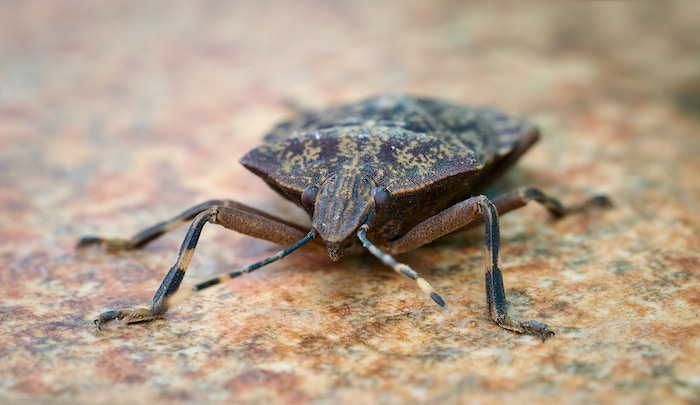
Do You Need a Special Camera for Macro Photography?
Many camera features make life easier if you want to try macro photography, so a special camera does help. But a proper macro lens is more important.
To get extreme close-ups with sharp detail, you need something to create an image on the sensor with a 1:1 magnification ratio. On the other hand, modern smartphones are pretty good at macro work, so the best camera for close-up shots might be the one in your pocket!
Do You Need a Lot of Light for Macro Photography?
Yes. Good lighting is crucial for macro photography to capture fine details. Macro subjects are often small, so enough light helps avoid shadows and maintain image quality.
Natural light, diffused through a reflector or softbox, can work well. Or you can use an external ring flash or continuous lighting to control and enhance the illumination. Adequate lighting helps bring out the intricate textures and colors in macro subjects.
Check our posts on the best camera for jewelry photography or for taking artwork photos next!

